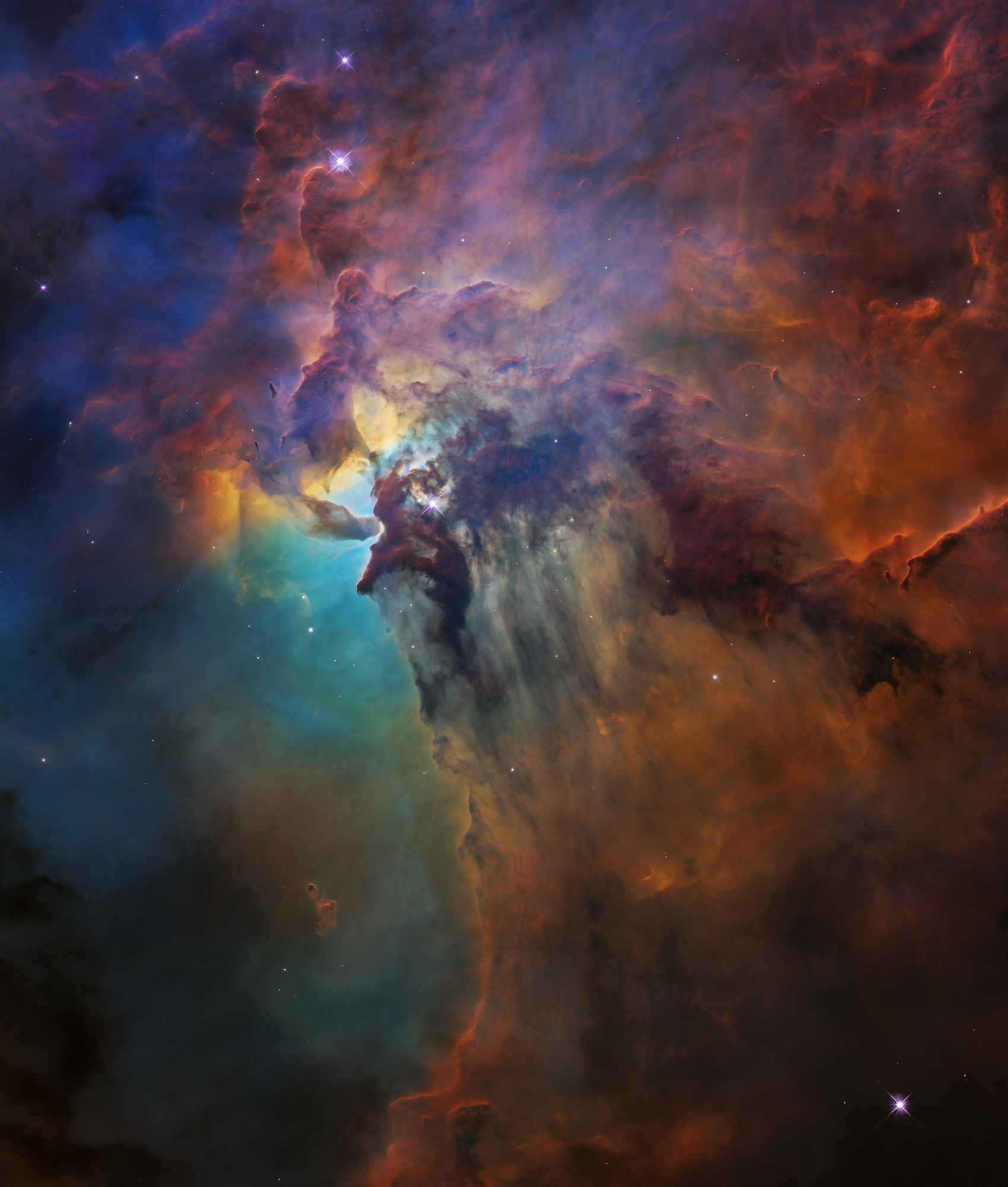2 min read

This colorful image, taken by the Hubble Space Telescope, celebrates the Earth-orbiting observatory’s 28th anniversary of viewing the heavens, giving us a window seat to the universe’s extraordinary stellar tapestry of birth and destruction. At the center of this image is a monster young star 200,000 times brighter than our Sun that is blasting powerful ultraviolet radiation and hurricane-like stellar winds, carving out a fantasy landscape of ridges, cavities, and mountains of gas and dust.
This mayhem is all happening at the heart of the Lagoon Nebula, a vast stellar nursery located 4,000 light-years away, visible in binoculars as merely a smudge of light with a bright core.
The giant star, called Herschel 36, is bursting out of its natal cocoon of material, unleashing blistering radiation and torrential stellar winds, which are streams of subatomic particles, that push dust away in curtain-like sheets. This action resembles the Sun bursting through the clouds at the end of an afternoon thunderstorm.
Herschel 36’s violent activity has blasted holes in the bubble-shaped cloud, allowing astronomers to study this action-packed stellar breeding ground. The hefty star is 32 times more massive than our Sun and its temperature is 40,000 degrees kelvin; it is nearly nine times our Sun’s diameter. Herschel 36 is still very active because it is young by a star’s standards, only 1 million years old. Based on its mass, it will live for another 5 million years. In comparison, our smaller Sun is 5 billion years old and will live another 5 billion years.
The image shows a region of the nebula measuring about 4 light-years across.







